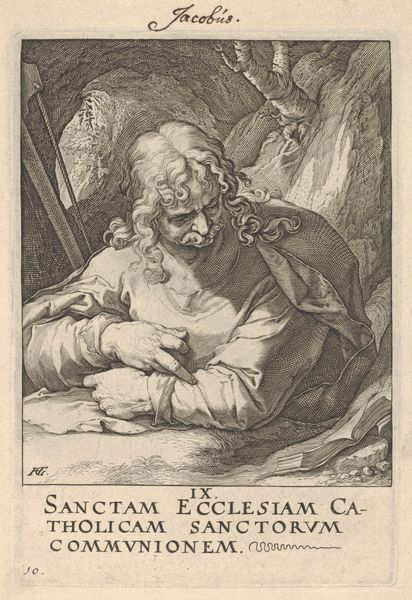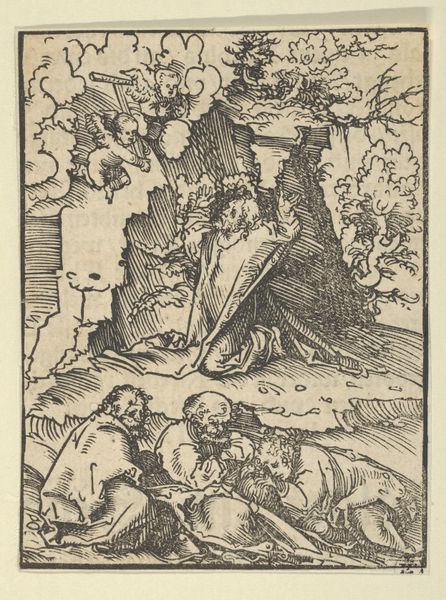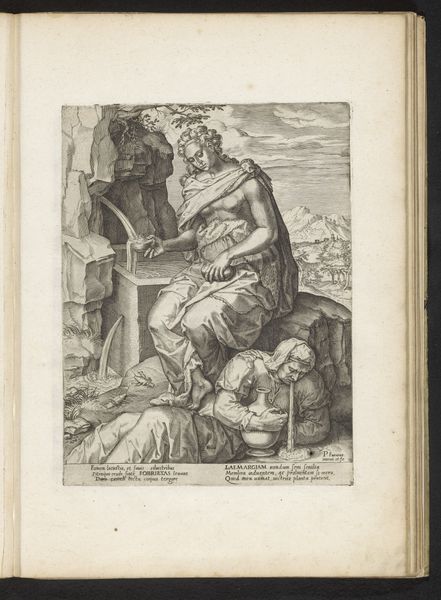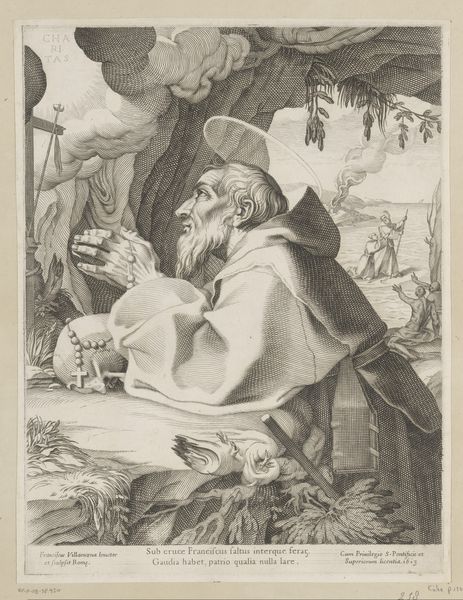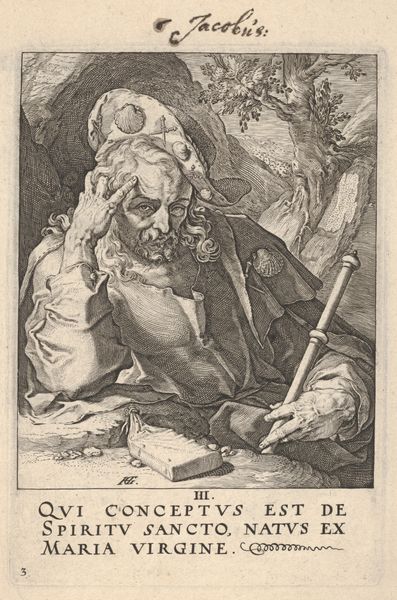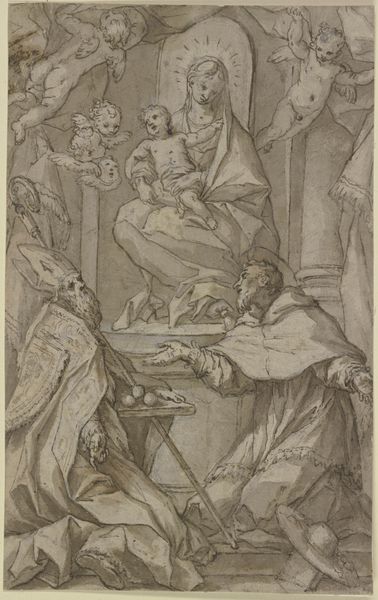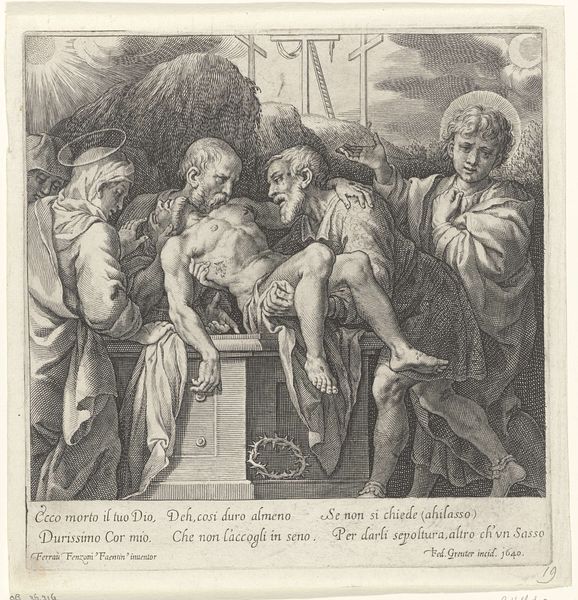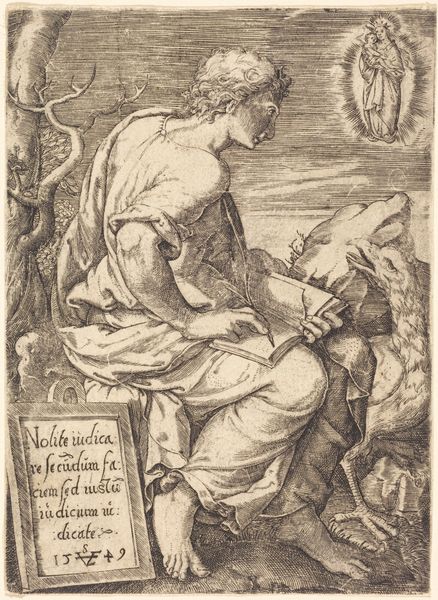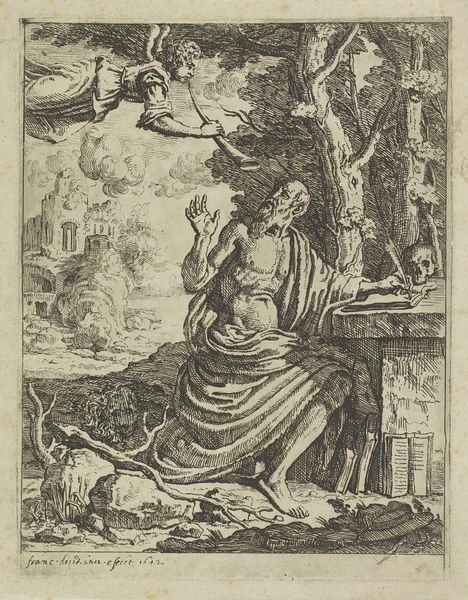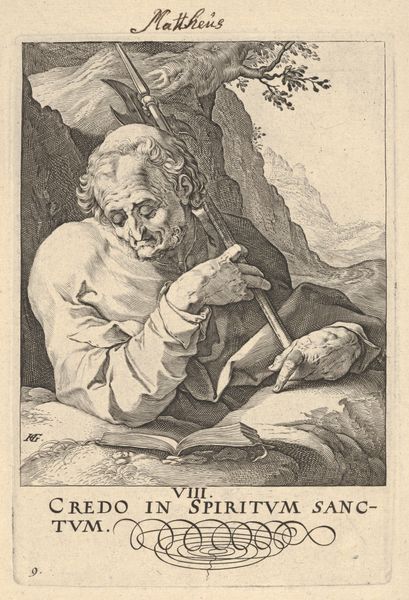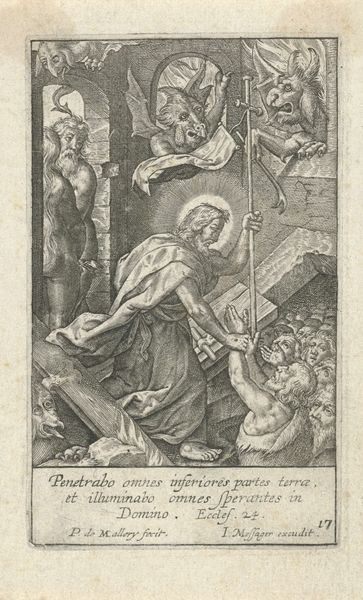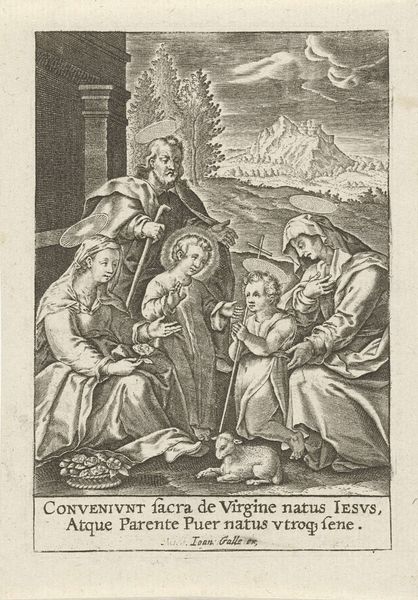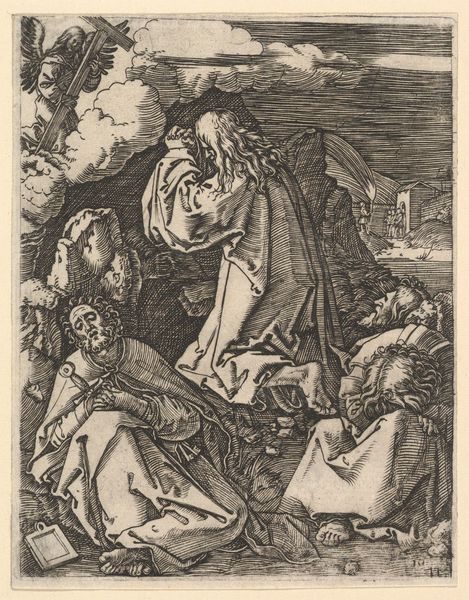
print, engraving
#
portrait
#
baroque
# print
#
figuration
#
engraving
Dimensions: height 150 mm, width 104 mm
Copyright: Rijks Museum: Open Domain
Editor: This is “Apostel Jakobus de Mindere,” or the Apostle James the Lesser, an engraving from sometime between 1588 and 1622. I'm struck by how human and un-idealized James looks, quite different from how religious figures are usually portrayed. What can you tell me about this piece and its context? Curator: This print offers a fascinating insight into the politicization of religious imagery during the Counter-Reformation. Figures like James were central to Catholic doctrine, and prints like this played a crucial role in reasserting those beliefs amidst the rise of Protestantism. Editor: So, this image served a specific purpose? How would it have been used? Curator: Absolutely. Consider the text at the bottom: "Sanctam Ecclesiam Catholicam Sanctorum Communionem" - a declaration of the holy Catholic Church. Prints were widely disseminated, becoming tools for religious instruction and reinforcement. How does that influence your understanding of James's individual depiction? Editor: I see what you mean. His unidealized appearance actually makes him more relatable. Instead of divine perfection, it emphasizes his humanity and thus the accessibility of faith itself. Curator: Precisely! It's also crucial to acknowledge the economic function. Printmaking enabled artists to generate income by meeting market demand, circulating faith and securing patronage, connecting religious expression with socioeconomic status. Editor: That is an interesting view to see art through political and historical lenses! Curator: Indeed, this is what connects the art piece to something bigger and more meaningful. Editor: I never considered it that way before! Thanks. Curator: My pleasure. Looking at art from various perspectives is one way to broaden our understanding of not only a singular piece, but also the period.
Comments
No comments
Be the first to comment and join the conversation on the ultimate creative platform.
